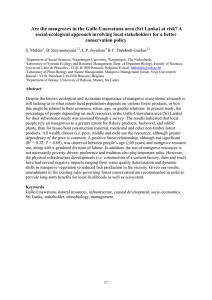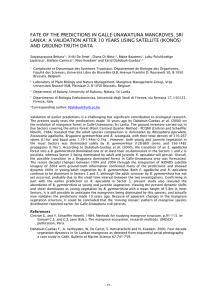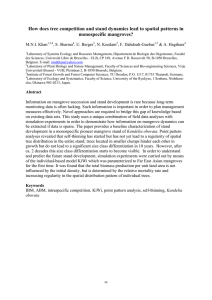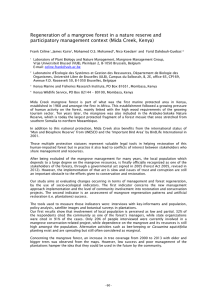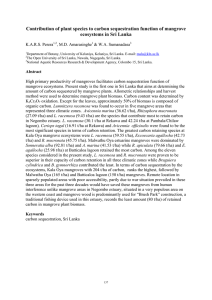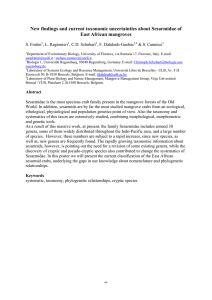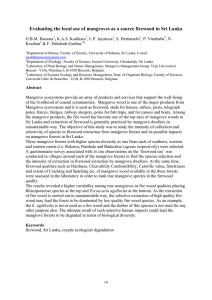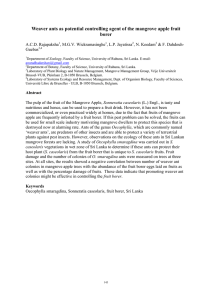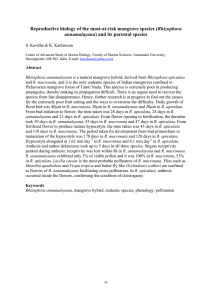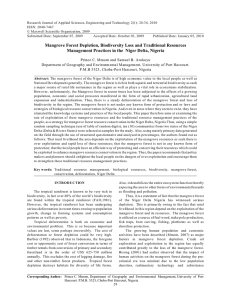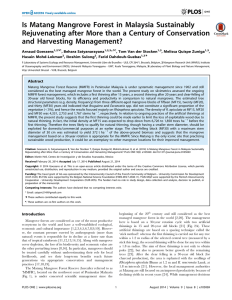Long-term mangrove forest development in Sri Lanka: early predictions
advertisement
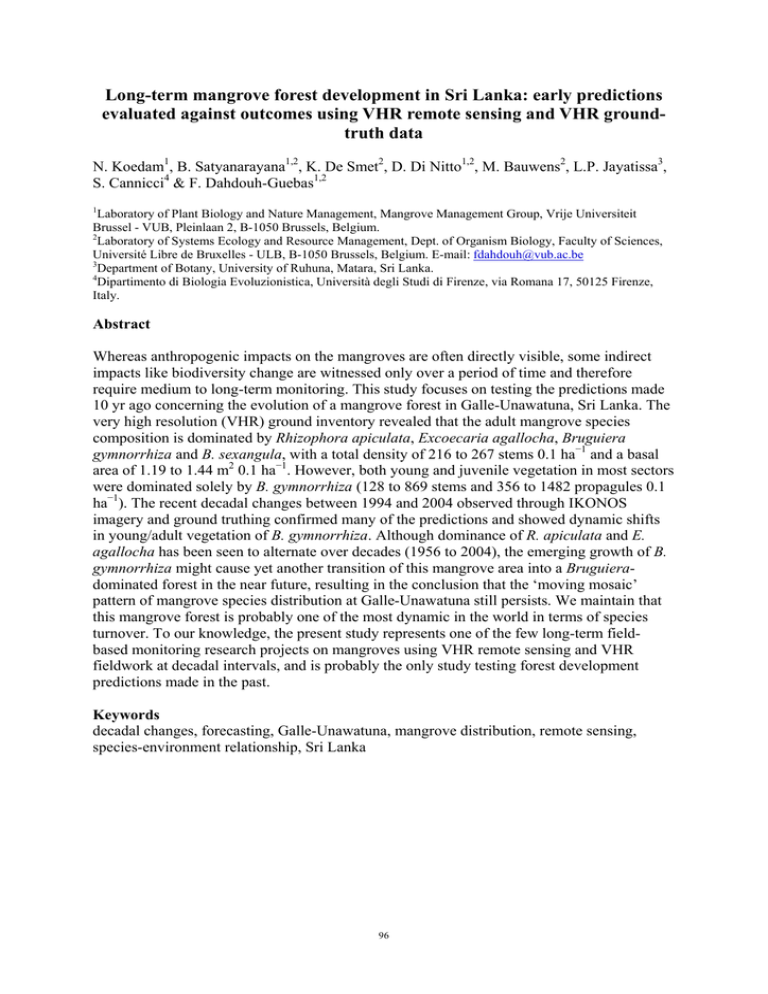
Long-term mangrove forest development in Sri Lanka: early predictions evaluated against outcomes using VHR remote sensing and VHR groundtruth data N. Koedam1, B. Satyanarayana1,2, K. De Smet2, D. Di Nitto1,2, M. Bauwens2, L.P. Jayatissa3, S. Cannicci4 & F. Dahdouh-Guebas1,2 1 Laboratory of Plant Biology and Nature Management, Mangrove Management Group, Vrije Universiteit Brussel - VUB, Pleinlaan 2, B-1050 Brussels, Belgium. 2 Laboratory of Systems Ecology and Resource Management, Dept. of Organism Biology, Faculty of Sciences, Université Libre de Bruxelles - ULB, B-1050 Brussels, Belgium. E-mail: fdahdouh@vub.ac.be 3 Department of Botany, University of Ruhuna, Matara, Sri Lanka. 4 Dipartimento di Biologia Evoluzionistica, Università degli Studi di Firenze, via Romana 17, 50125 Firenze, Italy. Abstract Whereas anthropogenic impacts on the mangroves are often directly visible, some indirect impacts like biodiversity change are witnessed only over a period of time and therefore require medium to long-term monitoring. This study focuses on testing the predictions made 10 yr ago concerning the evolution of a mangrove forest in Galle-Unawatuna, Sri Lanka. The very high resolution (VHR) ground inventory revealed that the adult mangrove species composition is dominated by Rhizophora apiculata, Excoecaria agallocha, Bruguiera gymnorrhiza and B. sexangula, with a total density of 216 to 267 stems 0.1 ha−1 and a basal area of 1.19 to 1.44 m2 0.1 ha−1. However, both young and juvenile vegetation in most sectors were dominated solely by B. gymnorrhiza (128 to 869 stems and 356 to 1482 propagules 0.1 ha−1). The recent decadal changes between 1994 and 2004 observed through IKONOS imagery and ground truthing confirmed many of the predictions and showed dynamic shifts in young/adult vegetation of B. gymnorrhiza. Although dominance of R. apiculata and E. agallocha has been seen to alternate over decades (1956 to 2004), the emerging growth of B. gymnorrhiza might cause yet another transition of this mangrove area into a Bruguieradominated forest in the near future, resulting in the conclusion that the ‘moving mosaic’ pattern of mangrove species distribution at Galle-Unawatuna still persists. We maintain that this mangrove forest is probably one of the most dynamic in the world in terms of species turnover. To our knowledge, the present study represents one of the few long-term fieldbased monitoring research projects on mangroves using VHR remote sensing and VHR fieldwork at decadal intervals, and is probably the only study testing forest development predictions made in the past. Keywords decadal changes, forecasting, Galle-Unawatuna, mangrove distribution, remote sensing, species-environment relationship, Sri Lanka 96
